Axial Extension in Yoga: 4 Steps to Lengthen Your Spine
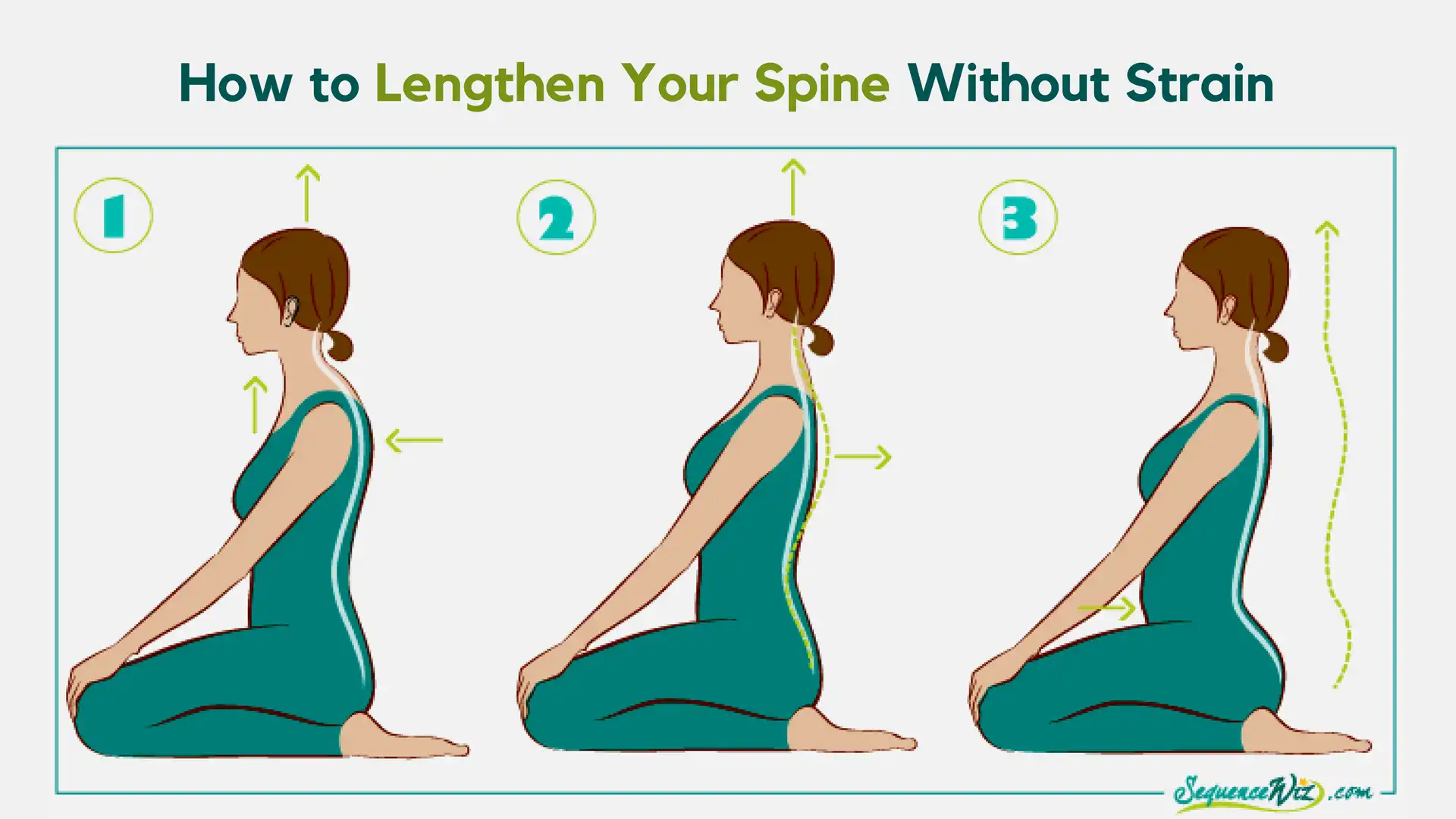
Article At A Glance
Learn the benefits of the two yoga methods of spinal extension: focusing on vertical alignment, and focusing on spinal curve integration.
Axial extension is a magical movement that will help lengthen your spine and realign the spinal curves to improve your posture. Yet, most people don’t know how to do it. Here is a guide to incorporating axial extension into your yoga practice and daily habits.
There are two distinct ways of doing spine lengthening exercises, a.k.a. axial extension postures: One focuses on bringing the spine into maximum vertical alignment, and another one that focuses on integrating all the spinal curves without strain.
Step 1. Assess Your Posture and Spinal Alignment
Before you begin any sort of experimentation here, you need to find out what the shape of your spine is currently. You probably already have an idea if you have an exaggerated thoracic or lumbar curve. If not, stand sideways by the mirror and take a closer look. Or better yet, have somebody observe you and give you feedback.
Keep in mind though, that you are interested in the shape of the spine itself, not the surrounding structures. For example, if your shoulder blades tend to “wing out,” it might look like you have a pronounced upper back curve, but this is the shape of your shoulder blades, not the spine. Instead of looking at that, have somebody trace the shape of your thoracic spine with his or her hand and tell you if it feels flat or rounded.
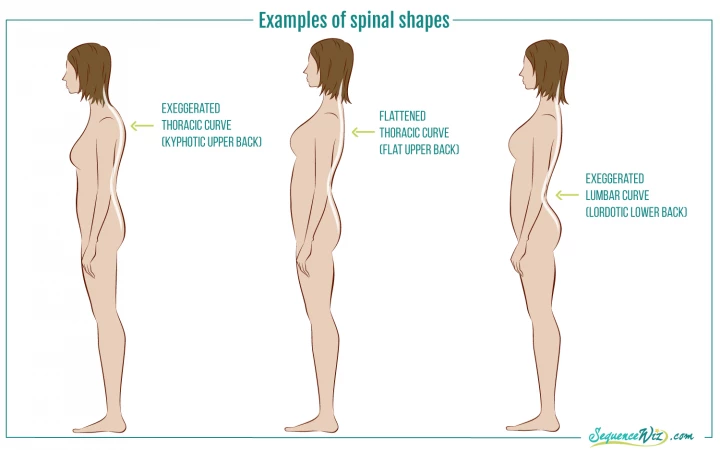
Keep in mind that it’s not like one is better or worse than the other. It’s just that each type has certain tendencies and this is what you have to work with. Once you get an understanding of what your spinal shape is like, you can apply the appropriate recommendations from below.
Step 2. Lengthen Your spine: Try This Yoga Pose to Facilitate Vertical Alignment

Lie down on your back, raise your arms up and then stretch in both directions—up with your hands, and down with your feet. This is the simplest representation of axial extension—you are trying to lengthen the spine. Seems easy enough. Lengthen on the inhalation, and relax on the exhalation.
One thing you will probably notice right away is that your spinal curves change shape when you do that. Your thoracic spine is likely to flatten more (as it always does when you raise your arms up) and your lumbar curve will probably deepen (to compensate for the thoracic curve flattening). By itself, this is not a problem. It becomes a problem if:
A. We don’t control the depth of the lower back curve and instead exaggerate it.
B. We do not have a lot of mobility in the thoracic curve and end up straining the shoulders and neck in our efforts to raise the arms all the way up. This is common for folks with kyphotic backs. (A kyphotic spine is one with an exaggerated thoracic curve.)
Step 3: Refine the Position of the Spinal Curves
To avoid common alignment mistakes, here are a couple of things you can do to help build greater awareness of your spinal curves and maintain healthy alignment.
A. We can focus on progressive abdominal engagement with every exhalation and control how far the pelvis rotates forward.
B. We need to make sure to awaken the thoracic area before we do any poses that require us to hold the arms overhead, especially if we intend to bear weight on the hands.
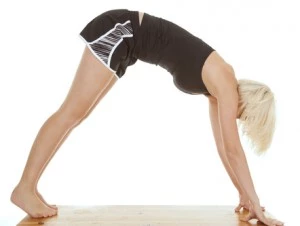
Quick example: It is problematic for many people to hop into Downward-Facing Dog Pose too soon at the beginning of the class because of the common restrictions in the upper back and shoulders. So it might be useful to do Vajrasana (Diamond Pose, sitting on your heels) to warm up the shoulders and begin to move the thoracic spine, and Bhujangasana (Cobra Pose) to warm up the upper back.
Bhujangasana won’t do anybody any good, though, if we mostly bend in the lower back (and many people who have upper back stiffness will do just that). So keeping the hands by the lower ribs and elbows up while pulling (instead of pushing with the hands) will usually help bring some awareness and movement into the upper back. After you do that few times, you will be more ready for other spine lengthening exercises such as the Downward-Facing Dog Pose and the like.
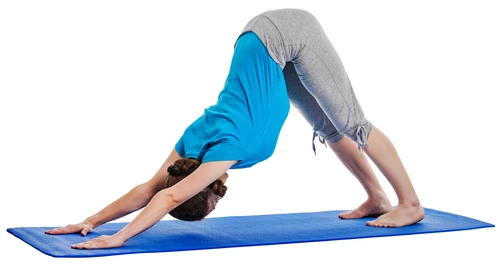
On the other side of the spectrum, of course, are the folks with flat thoracic curves, who tend to hang on their shoulder joints and almost curve their thoracic spines backward. This is not a good idea either, since we are not trying to lose thoracic curve altogether (you need it), and it compromises shoulder stability. So in Downward-Facing Dog Pose, for example, we would avoid pulling the chest toward the thighs and instead focus on breathing into the upper back as if you were trying to inflate your thoracic curve and make it more pronounced.
As you can see, whenever we practice spine lengthening exercises we need to understand what the shape of our curves is, to begin with, and keep a close eye on what the spinal curves are doing when we move and when we sit (which brings us to the second way of doing spine lengthening exercises).
Step 4. Practice Axial Extension: Try This Yoga Pose to Create Awareness of the Spinal Curves
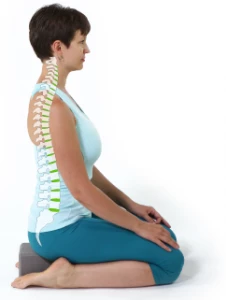
Sit and breathe in a comfortable position with your eyes closed. After you do this for a while, it’s likely you will begin to slouch (exaggerating your thoracic curve) or collapse into your lower back (exaggerating your lumbar curve). To avoid doing that we want to create a sensation of lifting up through the top of the head, but this action is different from the one we described earlier. Here you have an opportunity to fine tune the position of your spinal curves and support them in a place where they are the most vulnerable.
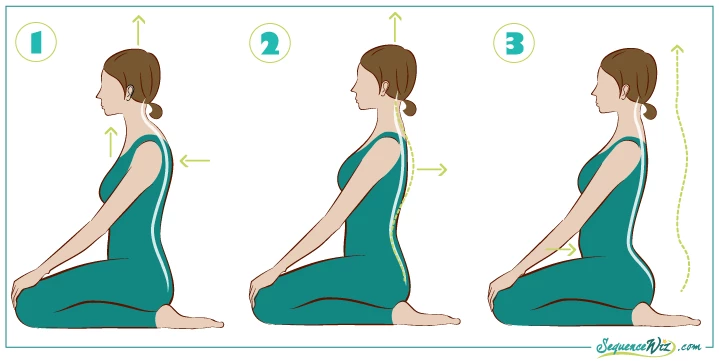
- If your thoracic curve is very pronounced, every time you inhale lengthen upward and try to flatten your thoracic curve a bit while lifting the chest up. Make sure that this action doesn’t affect the lower back curve.
- If your thoracic curve is flat, avoid pulling the shoulder blades down and instead inhale into your upper back as if you are trying to make your thoracic curve more pronounced. Your inner body sense might start screaming, “I am not upright, I am slouching!” Comfort it by lengthening upward through the top of your head as you inhale, simultaneously inflating your upper back.
- If you tend to collapse into the lower back curve, make sure to progressively contract your abdomen as you exhale and create the sensation of lifting upward all along the spine when you inhale.
All those details might seem subtle and insignificant, but they make a huge difference in the way your body learns to support itself. And spine lengthening exercises give us an excellent opportunity to focus on spinal alignment. Once you get yourself to a place where it requires less effort to stay aligned and upright, your body can be more at ease in your daily life so that you can spend more time on breathing and meditation in your yoga practice with minimum bodily discomfort. And this is what yoga is ultimately about, right?
Also, read...
How to Bend Forward Without Stressing the Spine
Slump No More: 5 Poses for a Healthy Thoracic Spine
Love your Back With This Spine-Focused Yin Yoga Sequence
Related courses

Educated as a school teacher, Olga Kabel has been teaching yoga for over 14 years. She completed multiple Yoga Teacher Training Programs but discovered the strongest connection to the Krishnamacharya/ T.K.V. Desikachar lineage. She had studied with Gary Kraftsow and American Viniyoga Institute (2004-2006) and received her Viniyoga Teacher diploma in July 2006, becoming an AVI-certified Yoga Therapist in April 2011. Olga is a founder and managing director of Sequence Wiz— a web-based yoga sequence builder that assists yoga teachers and yoga therapists in creating and organizing yoga practices. It also features simple, informational articles on how to sequence yoga practices for maximum effectiveness. Olga strongly believes in the healing power of this ancient discipline on every level: physical, psychological, and spiritual. She strives to make yoga practices accessible to students of any age, physical ability, and medical history, specializing in helping her students relieve muscle aches and pains, manage stress and anxiety, and develop mental focus.



